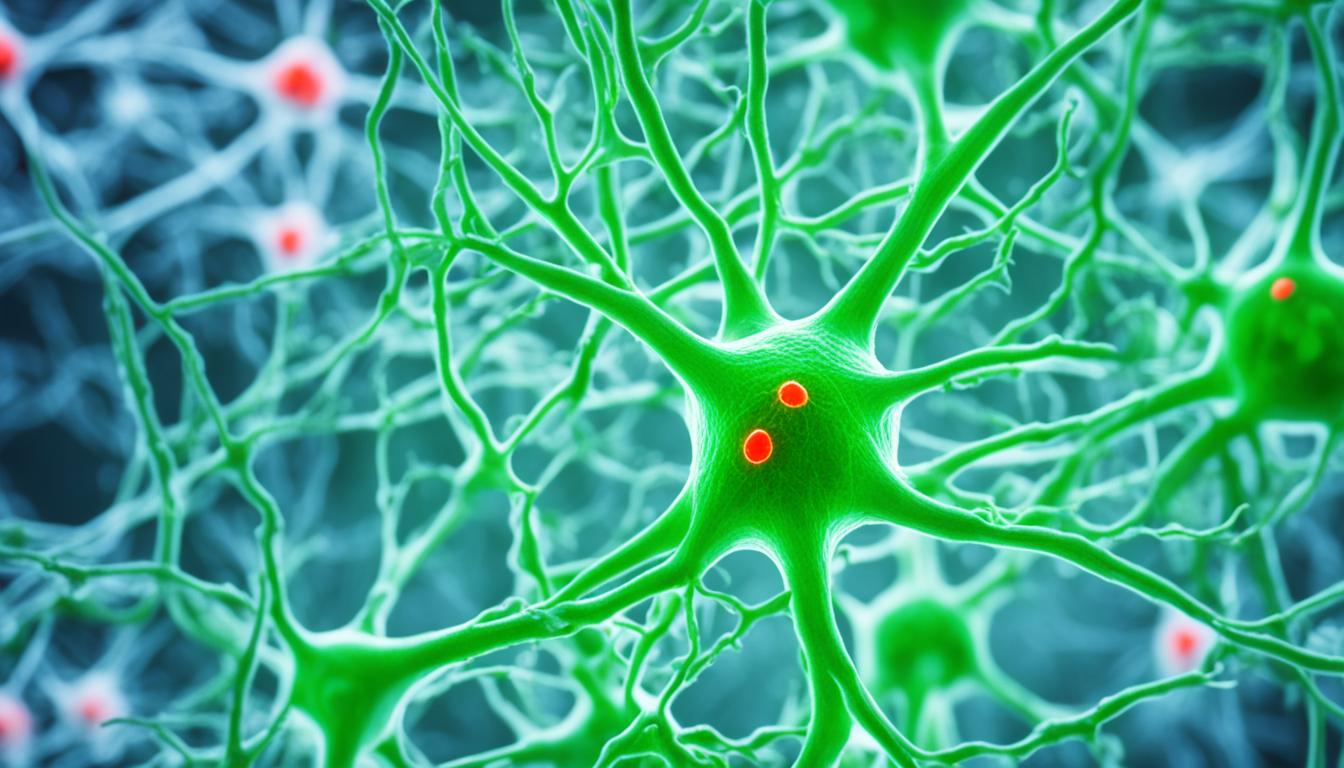Myelin oligodendrocyte glycoprotein antibody-associated disease (MOGAD) is a rare inflammatory disease. It affects the central nervous system by attacking the protective fatty cover of nerve fibers. This causes damage and dysfunction in areas like the optic nerves, brain, and spinal cord.
People with MOGAD might lose their vision, have weak muscles, feel confused, have seizures, or get headaches. The severity of these symptoms can vary, and they might not happen all the time. It’s tricky to diagnose MOGAD because it can look like other conditions, including multiple sclerosis or neuromyelitis optica spectrum disorder.
There’s no known cure for MOGAD, but treatments can help. These treatments work by reducing inflammation and calming down the immune system. In some serious cases, doctors might consider using stem cell therapy to help the central nervous system heal.
Doctors use blood tests to look for MOG antibodies when diagnosing MOGAD. They might also do imaging tests like MRI to check for signs of damage or inflammation in the nervous system. These tests are key to telling MOGAD apart from other similar diseases.
Key Takeaways:
- MOGAD is a rare inflammatory disease that affects the central nervous system.
- Symptoms of MOGAD include vision loss, muscle weakness, confusion, seizures, and headaches.
- MOGAD can often be misdiagnosed as other diseases.
- Treatments for MOGAD aim to manage symptoms and improve quality of life.
- Stem cell therapy may be considered for individuals with severe MOGAD.
Symptoms and Complications of MOGAD
MOGAD is short for Myelin Oligodendrocyte Glycoprotein Antibody-Associated Disease. It brings a mix of symptoms that can show in various body parts. These signs happen because the immune system attacks myelin. Myelin wraps around nerve fibers in the central nervous system.
Optic Neuritis
Optic neuritis is a common sign of MOGAD. It makes the optic nerve swell. This can harm vision and cause eye pain, especially when the eyes move. Getting a quick diagnosis and treatment help reduce any lasting vision loss.
Transverse Myelitis
MOGAD can lead to transverse myelitis. This is when the spinal cord becomes inflamed. It might cause limb weakness, loss of feeling, and trouble controlling the bowels and bladder. Working with doctors for rehabilitation and therapies improves life quality.
Acute Disseminated Encephalomyelitis
An effect of MOGAD can be acute disseminated encephalomyelitis (ADEM). It causes inflammation across the brain and spinal cord. ADEM might bring on vision loss, muscle weakness, and confusion. Quick medical help is important to prevent any permanent damage.
People with MOGAD might also face seizures, headaches, and fever. It’s key to keep these symptoms in check for the best outcomes.
The troubles from MOGAD can be very life-changing. Some might face paralysis in their arms and legs, creating big challenges. Bowel and bladder problems need special care. There’s also a risk of blindness and brain issues like memory loss and trouble focusing.
Diagnosing MOGAD early and correctly is essential. This helps in starting the right treatments and strategies. They aim to ease symptoms and stop more nerve damage. The next part will cover the causes, how it’s diagnosed, and risk factors of MOGAD.
Causes, Diagnosis, and Risk Factors of MOGAD
The exact cause of MOGAD is unknown. It is considered an autoimmune disorder. Here, the body mistakenly attacks its own myelin. This is the protective layer around nerve fibers. The role of MOG antibodies in this disease is crucial.
MOGAD is often mistaken for other conditions like multiple sclerosis. It can also be confused with neuromyelitis optica spectrum disorder.
Age is a significant risk factor for MOGAD. Children and young adults are at higher risk. Recent infections or vaccinations also increase the likelihood of developing the disease.
Diagnosing MOGAD involves specific blood tests. These tests look for MOG antibodies. Doctors may also use imaging, such as an MRI, to spot any issues in the central nervous system.
Risk Factors for MOGAD
| Risk Factors | Description |
|---|---|
| Age | Children and young adults are more susceptible to developing MOGAD. |
| Recent infection or vaccination | Infections or vaccinations in close proximity to symptom onset may increase the risk of developing MOGAD. |
Treatment and Prognosis of MOGAD
While there isn’t a cure for MOGAD, treatments can help control symptoms and better the long-term outlook. One key treatment is intravenous corticosteroids. These meds are given into the bloodstream to quickly ease symptoms and stop more harm to the nervous system.
More severe cases might need plasma exchange or intravenous immunoglobulin. With plasma exchange, blood plasma is swapped with donor blood plasma, removing harmful antibodies. Intravenous immunoglobulin involves giving a lot of healthy immunoglobulins into the blood, aiming to calm the immune system and cut down on inflammation.
For those with the relapse form of MOGAD, disease-modifying therapies are used to prevent future attacks. These can include specific medicines or therapies that target the immune problem at its core.
How well someone does with MOGAD can vary. Some, especially children, might recover fully from the first attack. Yet, relapses are possible, which can cause lasting damage to the nervous system. Issues like trouble walking or seeing may stick around. Keeping a close eye on the disease and swift treatment is key to better long-term results.

